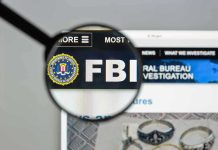
The rapid disappearance of America’s WWII veterans threatens to sever our living connection to a generation that embodied patriotism, courage, and the values that define our nation.
Story Snapshot
- Only about 66,000 WWII veterans remain in the U.S. as of 2024, less than 0.5% of those who served.
- Families, museums, and historians face urgent pressure to preserve firsthand accounts before they vanish forever.
- The loss of living veterans marks a shift from direct memory to historical record, impacting national identity and education.
- Surveys reveal declining public knowledge about WWII, raising concerns about the erosion of patriotic values and historical understanding.
The Vanishing Generation: The Final Days of America’s WWII Veterans
In 2024, the United States faces a sobering milestone: the number of living World War II veterans has dropped to roughly 66,000, representing less than half a percent of the original 16.4 million Americans who served. This vanishing generation once returned home to build families, strengthen communities, and anchor the nation’s sense of shared sacrifice and purpose. The imminent loss of these heroes signals a pivotal transition in national memory, raising urgent questions about how their legacy will be preserved for future generations.
As these veterans reach their late 90s and beyond, their stories—told at kitchen tables, in classrooms, and at community events—are at risk of being lost forever. Families and communities have long relied on these firsthand accounts to connect younger Americans with the realities of war, freedom, and duty. The Department of Veterans Affairs and dedicated institutions like the National WWII Museum have responded by ramping up efforts to record oral histories and collect artifacts. The 80th anniversary of WWII’s end in 2025 has underscored the urgency of these preservation campaigns, as each passing year sees hundreds of veterans lost to time.
Declining Public Knowledge: A New Challenge for Historical Memory
Recent surveys indicate that 37% of Americans know little or nothing about World War II, a striking decline in public awareness as living witnesses disappear. The passing of the last World War I veteran in 2011 set a precedent for this transition from living memory to historical record. Now, as the WWII generation fades, educators and historians face the daunting task of keeping the lessons and values of that era alive. Museums are adapting by digitizing archives and using new technologies, but many experts warn that no digital resource can fully replace the personal impact of meeting a veteran or hearing their story firsthand.
As public awareness wanes, there is growing concern among families and local communities about the erosion of patriotic values and the loss of shared historical understanding. The responsibility is shifting to educators, museums, and families to keep the legacy of WWII alive, often battling against both cultural amnesia and progressive agendas that downplay America’s achievements. Without a living link to the past, the risk is that future generations will forget what real sacrifice, courage, and national unity look like.
Institutions Race to Preserve Legacy Amid Social and Political Shifts
The National WWII Museum and similar organizations have intensified their missions, launching campaigns to collect stories, photos, and mementos from the remaining veterans. Leaders like Stephen J. Watson and Michael Bell, PhD, have emphasized the enormous responsibility to ensure these memories are not lost. These efforts coincide with broader societal debates over the meaning of patriotism, the role of the military, and the teaching of American history. As the veteran population dwindles, funding and public interest in preservation efforts may shift, forcing institutions to innovate and adapt to maintain engagement with WWII history.
Farewell, Fearless Hero: America's Last WW2 Navy Fighter Ace Passes at 103 https://t.co/zwcVIjnmaO
— Joe (@JustPlainJoeRI) August 25, 2025
The economic and social impacts of this transition are profound. Funding for museums and veteran organizations could decline as the direct connection to WWII fades. At the same time, schools and media are challenged to keep the stories relevant, especially as progressive narratives threaten to dilute the importance of traditional values and patriotic education. For conservative Americans who value family, freedom, and the lessons of history, this moment represents both a call to action and a warning: the legacy of the Greatest Generation must be fiercely protected or risk being forgotten.
Expert Perspectives: Preserving Freedom’s Legacy for Future Generations
Historians and museum directors agree that the preservation of oral histories and artifacts is now more urgent than ever. The National WWII Museum and the U.S. Department of Veterans Affairs continue to provide authoritative data and leadership in documenting this critical chapter. Some experts advocate for digital archives and virtual experiences to bridge the gap, while others insist that nothing can substitute for the power of personal testimony. The consensus is clear: without proactive action, the essential lessons of WWII—duty, resilience, and patriotism—could fade from America’s collective memory, undermining the very foundations of our national identity. For those who cherish the Constitution, family values, and the sacrifices that built this nation, honoring and preserving these stories is more than history—it’s a solemn responsibility.
Sources:
Latest VA projection reveals rate of WWII’s fade from living memory
Mapped: Where WWII veterans live
When Will the US Lose Its Last WWII Veterans?












